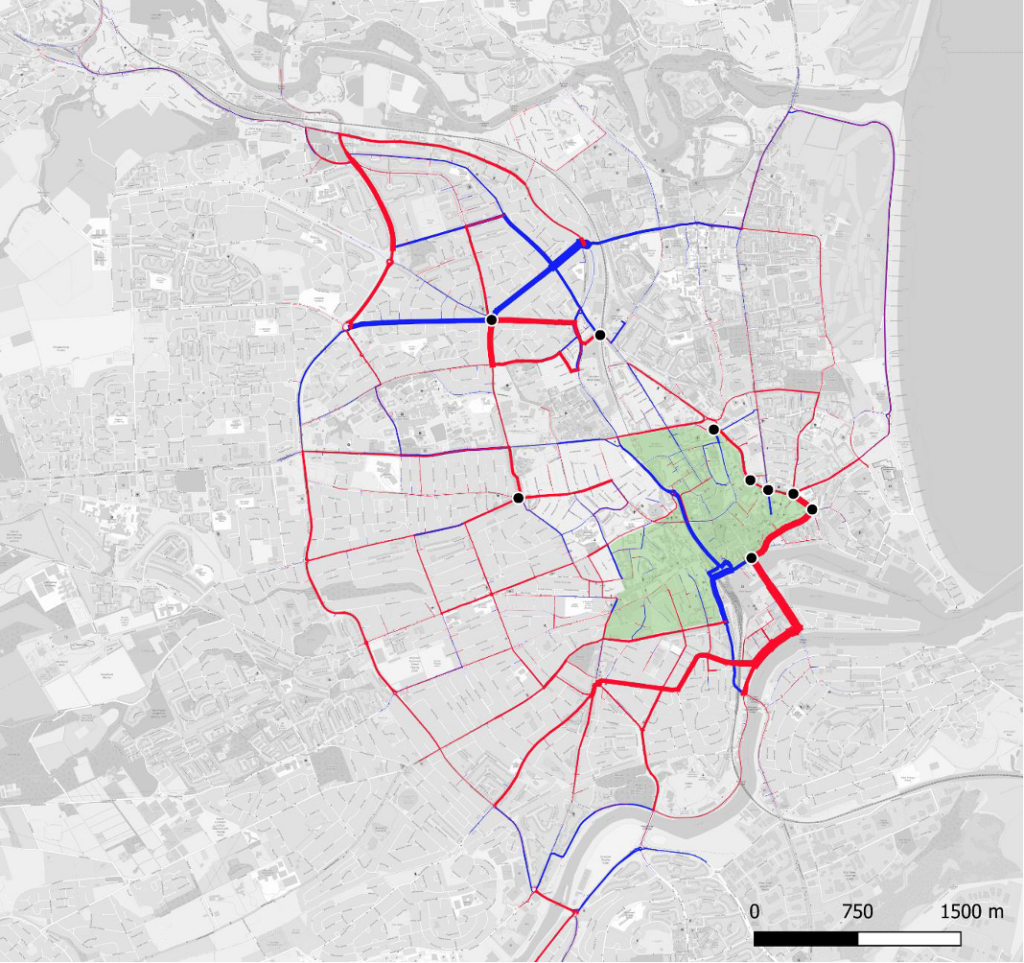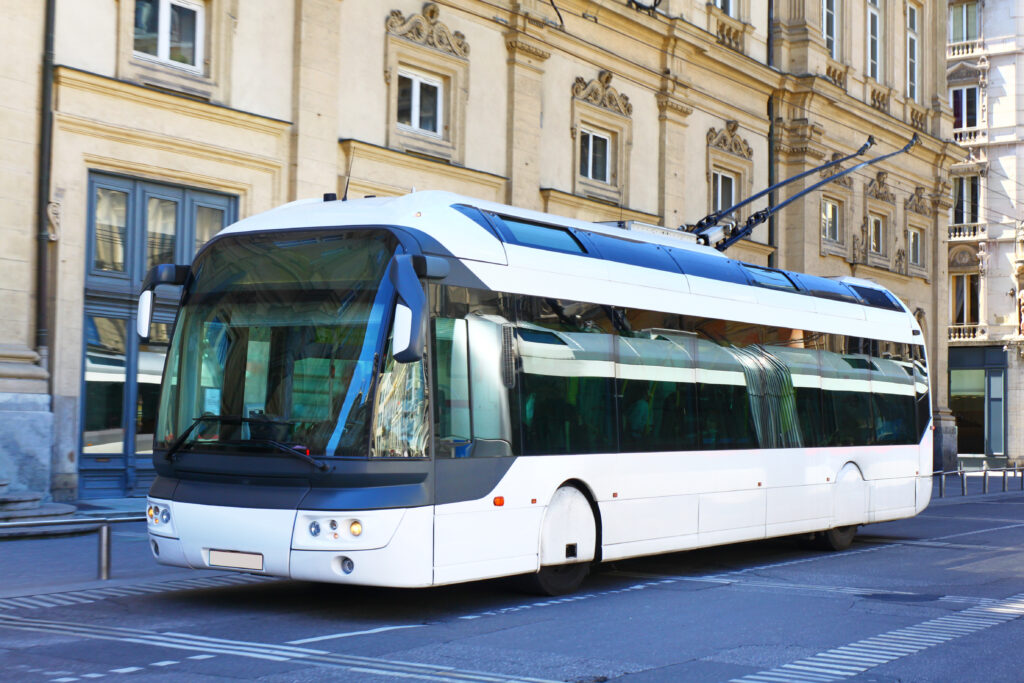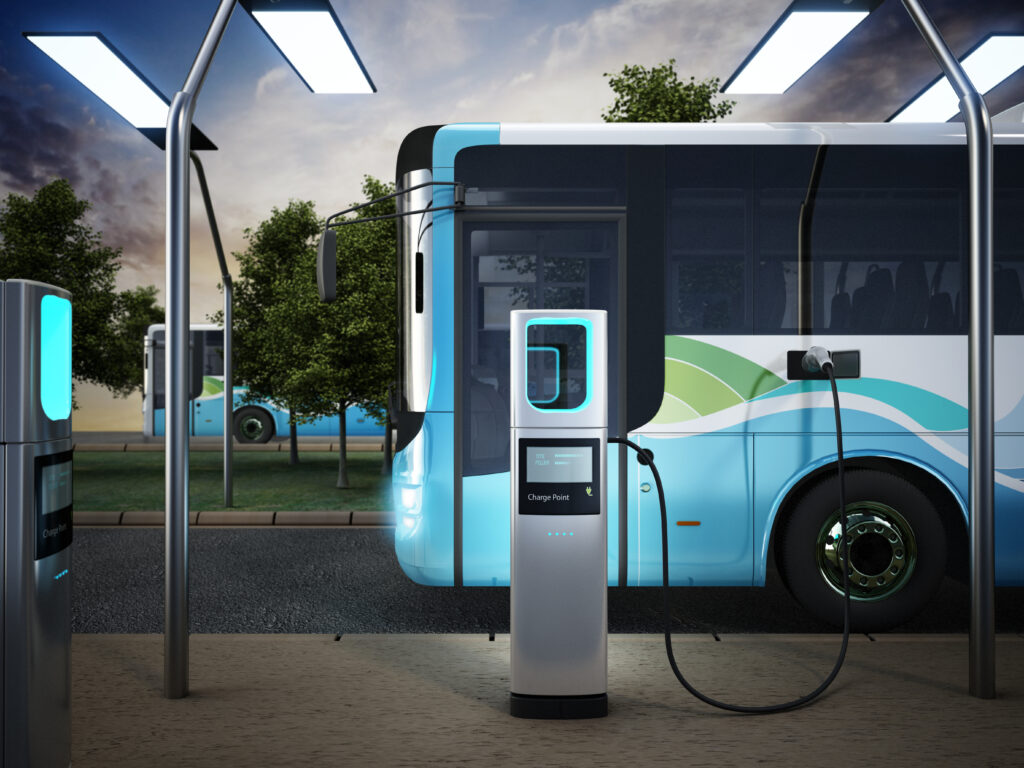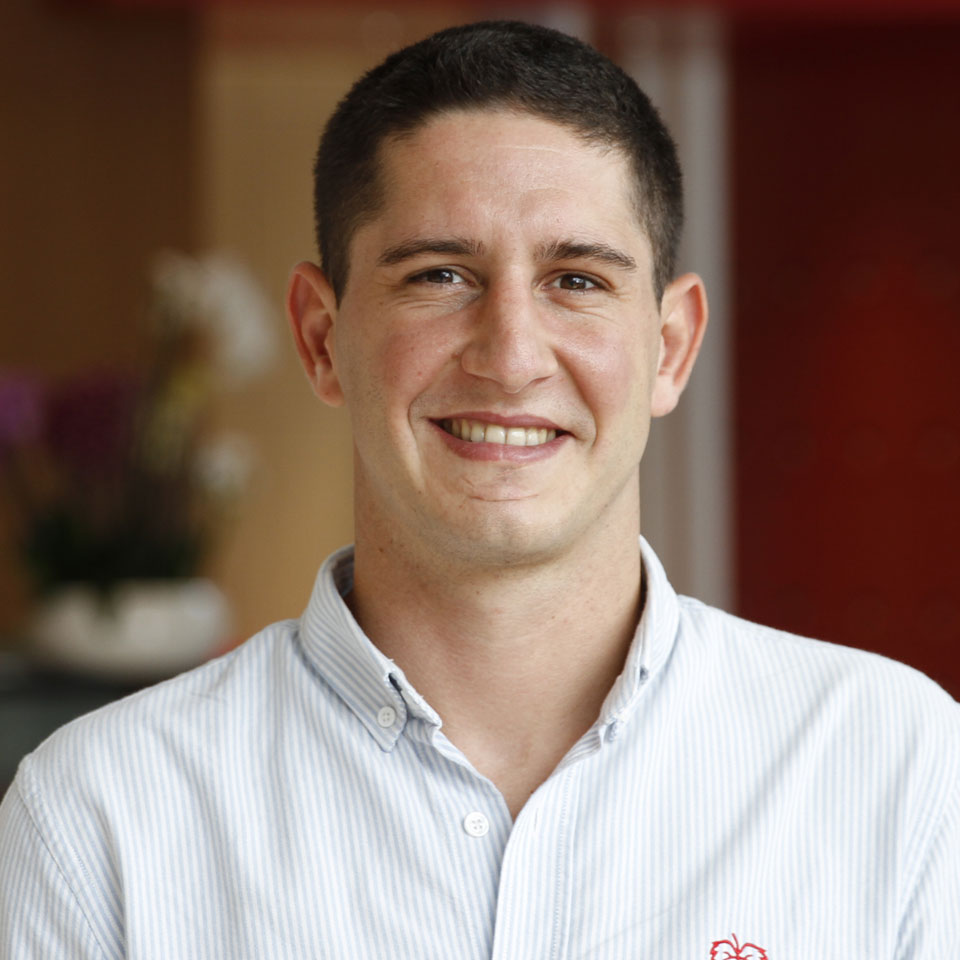A vital element in the decarbonisation of mobility, energy transition can be a long and swinding road for public transport operators. However, the path to net zero carbon is neither straight nor easy, with multiple possibilities to consider at each stage. This is why an expert and holistic vision is essential.
Digital solutions provide invaluable assistance in taking into consideration the various possible scenarios. These include advanced simulations that provide projections of system evolutions, artificial intelligence (AI) trained to examine multiple iterations, and digital twins that capture data from systems in operation to help model future projects.
In our series of articles on energy transition, we first looked at how the energy transition fits in with the other pieces of the decarbonisation jigsaw (Driving energy transition: a systemic approach for mobility), then explained how public authorities can act as a catalyst for wider energy transition in mobility (Energy transition: public transport leads the way). This third article analyses how digital solutions contribute to energy transition throughout the lifecycle of a transport network.
Mobility and digital already go together
Advances in digital solutions and technology have already enabled big leaps forward in the mobility sector. Building Information Modelling (BIM) allows infrastructure to be modelled and ‘built’ virtually in 3D, reducing interface problems and improving certainty of outputs. Mobility as a Service (MaaS) has the ability to change behaviours and use of public and private transport while smart grids in energy networks can optimise power distribution, enabling wider use of renewable energy.
Digital solutions are already helping to plan and deliver energy transitions, as the examples below demonstrate. However, a note of caution. As with any software, inputs and assumptions must be robustly challenged to get valuable outputs. And, since any transition brings with it a multitude of challenges – political, social and economic – these too must be understood and factored in by anyone designing a system.
Planning to cut greenhouse gas (GHG) emissions and improve air quality using digital solutions
When thinking and reworking city centre transport strategies, local authorities have many complex problems to solve. They must reduce congestion, improve air quality and lower carbon emissions while maintaining accessibility for all and allowing the city to flourish economically.
In the UK, where national legislation on air pollution is particularly stringent, local authorities must get people to change their local travel practices in city centres. Many of them are opting for Low Emission Zones (LEZs), which prevent or discourage the circulation of highly polluting vehicles in a designated area by banning non-compliant vehicles or by introducing a toll at the entrance to the zone, which is obviously politically sensitive.
How can digital solutions help local decision-makers wishing to introduce LEZs? Take advanced traffic modelling: it can help planning these zones and optimisinge their use by testing different hypotheses and scenarios. These can take into account the likely behaviour of road users, incentives for change, issues of equity of access, and the adoption over time of new energy technologies. Above all, however, they must be based on a thorough understanding of the issues surrounding travel within a city. Human expertise and experience will remain essential, even if, in the future, increase of computation capabilities and data will improve model precision.
In Scotland, SYSTRA is working with three cities on the creation of their LEZ: Glasgow, Dundee and Aberdeen.
Case Study #1: improve air quality in Aberdeen, Scotland
In Aberdeen, the implementation of the LEZ has been integrated into a city masterplan which aims to reduce non-essential traffic and improve the liveability and the economy of the city.

After having identified eight points within the city centre where the levels of nitrogen dioxide (NO2) were exceeding legal limits, SYSTRA carried out an initial high-level assessment providing 40 options to tackle the problem. These encompassed various boundary positions, which type of vehicles should be restricted, issues of practicality and the impacts on those living and visiting the city centre, as well as the most dangerous air pollution levels. This initial phase identified that although emissions from cars impacted overall air pollution within the city centre, it was emissions from buses that were leading to dangerous levels at the eight locations identified.
From here, SYSTRA engineers narrowed the field to five possible scenarios which, they then modelled using an extensive traffic model of both the city centre and surrounding areas. One of the requirements was that all car parks around the city centre should be accessible without entering the LEZ. The model, which covers a zone of 5km by 4km, was created with PARAMICS, an in-house SYSTRA solution.
SYSTRA used a multicriteria analysis to propose the best of the five options. However, even for this best option, NO2 emissions were still too high at two points. To address this, SYSTRA proposed additional restrictions to implement, resulting in an optimised best option with no NO2 exceedance point left. The council’s aim is for the LEZ to be in operation from May 2024. SYSTRA is assisting in its implementation.
Integrating new energy technologies at the design phase using digital solutions
During the design of an electric bus network, one of the biggest challenges is how to balance the charging strategy and infrastructure with the demands of the various routes.
If we take the trolleybus as an example, new models combining on-board batteries with charging from overhead lines (OHL) can provide a flexible approach, suitable for cities where there is limited space within existing streetscapes, challenging topographies, or where architectural constraints and distinct cultural heritage features, in certain places, means that OHL are not always desirable.
In designing the optimum system, multiple factors must be considered: which sections should run on battery and which on OHL; the operation requirements of the network; how best to use the power from regenerative braking; and how to build in resilience, should parts of the charging infrastructure be compromised.
A digital model can help analyse and test different operational and charging scenarios, with expert input on potential operation strategies and electrical technology. Specialist models – such as SYSTRA’s TESS (Energy transition: public transport leads the way) which helps optimise charging infrastructure at depots – can also be deployed. Future developments will see more direct flows of information, whether from other software into the simulation model or directly from the field, for instance with information captured on buses, that are already in operation, fed directly into the model.
In France, laws to stimulate low carbon mobility (LTECV1 then LOM2) are driving transitions to electric bus fleets, particularly for urban areas with over 250,000 inhabitants.
1 Energy transition law for green growth
2 Mobility policy law
Case Study #2: Assist the design of trolleybus lines in the city of Lyon, France
In the Lyon metropolitan area, with its 1.4 million inhabitants, there are plans to add six more trolleybus lines to its existing network of nine.

For three of the six additional lines, which are due to be in operation in 2025 and 2026, SYSTRA is deploying the RATP Marcadet solution to help map out which parts of the line could be battery powered and which should use OHL. To do that it must consider factors including existing equipment, urban density, political will, technical feasibility and the ratio between battery and OHL sections. Additional charging at terminals and at the depot must also be envisaged.
One of the important questions for the city’s transport authority and the bus operator was whether the network would still operate, should one of the substations providing electricity shut down or should one OHL section not be accessible (traffic accident, demonstration…). Simulating such scenarios through the model, SYSTRA could ensure that the operation of the network was resilient.
For a network as complex as that of the Lyon agglomeration, it is essential that all the methods for supplying the model are developed in line with the local context and data. WiIthout forgetting the contributions of SYSTRA experts, the bus industry, and the client, all of whom have contributed to enriching the MARCADET solution used.
Data analysis of energy use with machine learning optimises operation
Although public transport systems consume less energy per head than private modes such as cars or planes, they are still heavy users of energy.
Ongoing global events affecting the supply and price of energy have only underlined our dependency on energy markets. This comes in addition to our urgent need for transition to greener and more independent energy sources, to limit climate change impacts.
Yet, the data we collect today from electric transport systems is still rather limited, generally focused on monitoring for safety purposes, instead of providing an accurate breakdown of electricity consumption and what affects it. Consumption is a complex affair affected by a whole raft of factors: weather, air conditioning and heating use, routes, traffic, passenger numbers, speed and operation plans.
Because contracts to date have not generally required for this type of data to be supplied to the operator or client once a system is in use, it is difficult to come by. And the lack of such data can lead to overdesign of a network, or under design for some extreme worst-case scenarios.
Case Study #3: optimise the electric bus fleet and its need for charging power requirements in Laval, Canada
In order to encourage cities to decarbonise mobility, the Canadian government is subsidising zero emission bus fleets.

Like many cities in Canada, Laval, which lies North of Montreal, is looking to move fast from diesel fuel to electric power regarding its bus fleet. However, with a host of different vehicles and technologies to choose from, operating conditions that vary from region to region and scarce data, mean that making informed decisions about future fleets is difficult.
Working with AI and live data acquisition specialists, SYSTRA has developed its own in-house digital solution series: HERON – WILD TURKEY – TESS. HERON uses AI machine learning to process and analyse data so that it can identify trends and work out which parameters have the biggest impacts on energy consumption in order to predict future consumptions. In the case of Laval, the analysis was carried out based nine buses of a pilot fleet.
Plugged to HERON predictive analysis, WILD TURKEY efficiently integrates charging sessions in the bus daily activities where TESS is used to model the required charging characteristics (time, power) at the depot depending on the operation plan.
After 12 months of data acquisition from the nine buses, one of the most striking findings was the huge difference (1-3 times) in energy consumption per kilometre between the different bus routes and for a same route on different periods.
That information will help inform the re-planning of routes so that energy use is optimised, and time spent driving to and from the depot for charging is minimised. Our inhouse digital solution series HERON – WILD TURKEY – TESS should optimise the number of buses required, reducing it by 2% on a fleet of 219 buses and reduce the peak depot power requirement by 17% from 10.4MW in the Laval use case scenario.
In the future, digital solutions will be even more powerful as engineers and data scientists make the algorithms for the AI better and faster. The input of more and more data will also increase the accuracy of the AI and allow its broader application in different scenarios.
A quiet revolution
Digital solutions are already playing a core role in the planning, design and operation of new energy systems and technologies, aiding the transition of public transport networks to low carbon energy sources.
By providing the ability to run multiple scenarios, to break down energy consumption data and to analyse the impacts of different parameters and alternative future scenarios, they aid communication between engineers, transport authorities and operators and significantly inform decision-making.
In the future, we will see more and more automation of the interfaces between software on the one hand and the integration of various data sources on the other, which will allow a wider use of AI as algorithms and machine learning progress.
At SYSTRA, we anticipate that better data flows from operations to planning and design will help to increase the efficiency and sustainability of tomorrow’s public transport systems. Nevertheless, the expertise required to define the technical and human (governance, behaviour) structuring assumptions will be all the more necessary to use and guide these tools properly.
 Australia
Australia  Brazil
Brazil  Canada
Canada  China
China  Denmark
Denmark  France
France  India
India  Indonesia
Indonesia  Ireland
Ireland  Italy
Italy  Malaysia
Malaysia  New Zealand
New Zealand  Norway
Norway  Poland
Poland  Saudi Arabia
Saudi Arabia  Singapore
Singapore  South Korea
South Korea  Sweden
Sweden  Taiwan
Taiwan  Thailand
Thailand  United Kingdom
United Kingdom  United States
United States  Vietnam
Vietnam 





